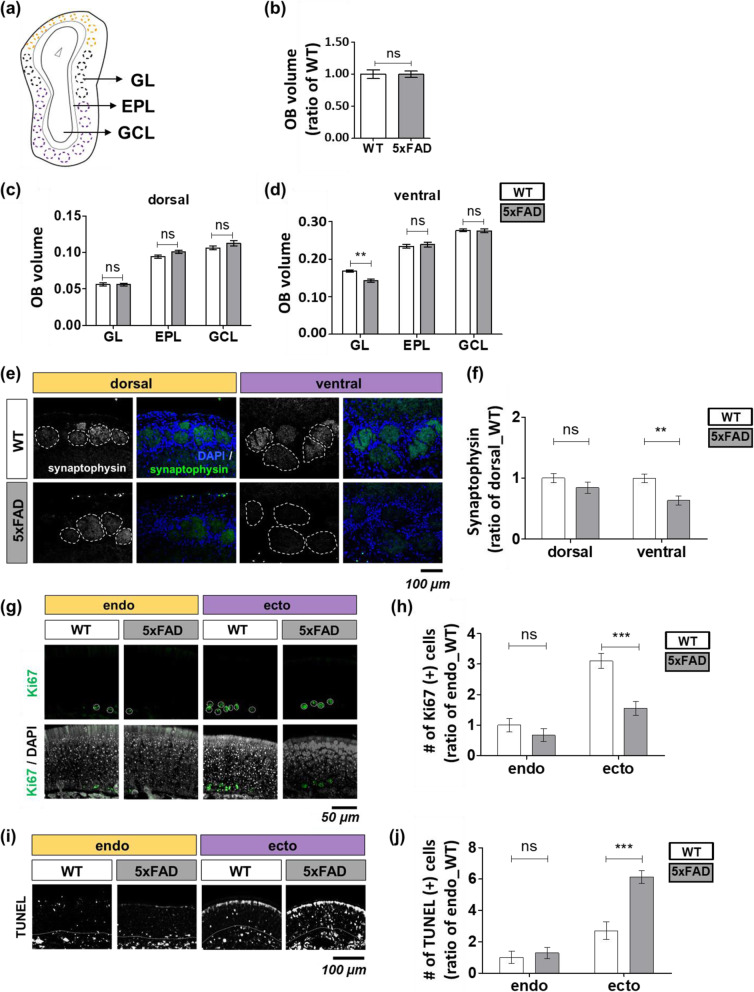Fig. 6.
Disrupted OSN structure in the ecto/ventral region of the peripheral olfactory system. a–d Analysis of the volume of the olfactory glomerular layer (WT, n = 3; 5xFAD, n = 3). a Depiction of coronal sections of the olfactory bulb with laminar structure. Glomerular layer (GL), external plexiform layer (EPL), granule cell layer (GCL). b Total OB volume. GL, EPL, and GCL volume was measured in the dorsal olfactory synapses (c) and ventral olfactory synapses (d). e, f Synaptophysin (+) (green) glomeruli in WT versus 5xFAD mice (WT, n = 4; 5xFAD, n = 3). e The local immunoreactivity of synaptophysin (+) glomeruli. f Synaptophysin immunoreactivity. g Representative Ki67 (+) data in the local OSN layer (WT, n = 3; 5xFAD, n = 3). h Quantitative analysis of Ki67 (+) cells. i Representative TUNEL-positive data in local OSN layers and j comparative quantification (WT, n = 3; 5xFAD, n = 3). Data are represented as mean ± SEM from three independent experiments. For statistical analysis, a two-way ANOVA was performed, followed by the Bonferroni post hoc test. Statistical significances are noted (ns, non-significant; **P < 0.01, ***P < 0.001). Olfactory sensory neurons (OSNs), wild-type (WT), five familial AD mutations (5xFAD)

